4 मीटर इंटरनेशनल लिक्विड मिरर टेलीस्कोप
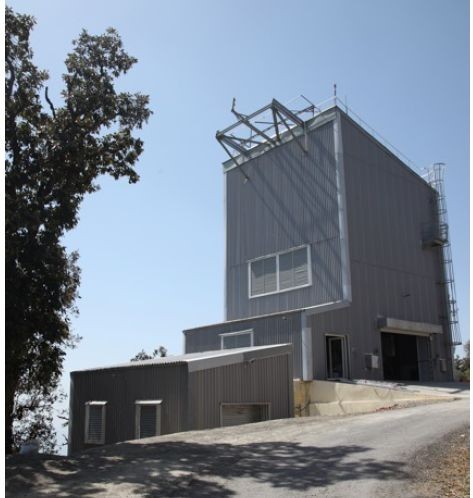
एरीज़ के देवस्थल वेधशाला परिसर में स्थित आईएलएमटी, कई देशों के कई संस्थानों के बीच अंतर्राष्ट्रीय सहयोग का परिणाम है। टेलीस्कोप को क्षणिक का पता लगाने के लिए गहरे फोटोमेट्रिक और एस्ट्रोमेट्रिक परिवर्तनशीलता सर्वेक्षण करने के लिए डिज़ाइन किया गया है। इसने अप्रैल-मई 2022 में पहला प्रकाश प्राप्त किया और परीक्षणों और सुधारों की एक श्रृंखला के बाद, औपचारिक रूप से 21 मार्च, 2023 को उद्घाटन किया गया। टेलीस्कोप अब विज्ञान अवलोकन के लिए तैयार है।
लिक्विड मिरर (एलएम) टेलीस्कोप के पीछे की तकनीक अपेक्षाकृत सरल है। टेलीस्कोप का प्राथमिक दर्पण एक घूर्णन कंटेनर है जिसमें अत्यधिक परावर्तक तरल (पारा) होता है। घूमते हुए द्रव की सतह एक परवलयज का आकार ले लेती है। तीन घटकों की आवश्यकता है:
- एक परावर्तक तरल धातु युक्त एक व्यंजन,
- एक एयर बेयरिंग जिस पर एलएम बैठता है, और
- एक ड्राइव सिस्टम.
हवा असर संचालित करने के लिए एक हवा कंप्रेसर की जरूरत है। हालांकि, दर्पण रोटेशन के किसी भी रुकावट से बचने के लिए (सीएफ़. संपीड़ित वायु प्रणाली के रखरखाव के दौरान), यह सबसे अच्छा है दो समानांतर वायु प्रणालियों के लिए। इसलिए, हमने दो एयर कम्प्रेसर स्थापित किए हैं, जिनमें से दोनों पूर्ण पीएलसी नियंत्रक के साथ 'उच्च गुणवत्ता वाले रोटरी स्क्रू एयर कंप्रेसर' हैं और वितरित कर सकते हैं 10-13 बार तक के उच्च दबाव पर मुफ्त हवा, हमारे एयर बियरिंग सिस्टम को संचालित करने के लिए आवश्यक है।
आईएलएमटी के पारा दर्पण में रोटेशन की गति द्वारा परिभाषित एफ/2 के एपर्चर के साथ 4-मीटर व्यास है। 'स्पेक्ट्रल इंस्ट्रूमेंट्स' द्वारा निर्मित एक 4Kx4K सीसीडी कैमरा और जो 4000 से 11000 स्पेक्ट्रल रेंज (एसडीएसएस फिल्टर जी) पर काम कर सकता है ', r', i' उपलब्ध हैं), दर्पण के लगभग 8 मीटर ऊपर आईएलएमटी के मुख्य फोकस पर स्थित होगा। तरल दर्पण दूरबीनों को झुकाया नहीं जा सकता है, वे परंपरागत दूरबीनों के रूप में ट्रैक नहीं कर सकते हैं। टाइम डिले इंटीग्रेशन (टीडीआई) नामक तकनीक का उपयोग करके ट्रैकिंग कृत्रिम रूप से की जाती है, जिसमें सीसीडी इलेक्ट्रॉनिक रूप से अपने चार्ज को एक कॉलम से दूसरे कॉलम में स्थानांतरित करता है। आकार में परवलयिक होने के कारण दर्पण को व्यास में लगभग 22 आर्कमिनट की एक सपाट फोकल सतह प्राप्त करने के लिए एक ऑप्टिकल सुधारक की आवश्यकता होती है। इन सभी तत्वों को यांत्रिक रूप से एक बाहरी संरचना और एक मकड़ी द्वारा जोड़ा जाता है।
आईएलएमटी +29o21'40"। इसकी हर रात ~40 वर्ग डिग्री आकाश तक पहुंच होगी। टीडीआई तकनीक 102s का एक प्रभावी एक्सपोजर समय प्रदान करती है जो आईएलएमटी तक पहुंचने की अनुमति देती है एक ही स्कैन में आई' बैंड में 22mag के सीमित परिमाण तक नीचे। कई रातों के जोखिम को एक साथ जोड़ा जा सकता है ताकि कम से कम वस्तुओं की जांच की जा सके। इसके विपरीत, क्षणिक वस्तुओं का पता लगाने के लिए छवि घटाव तकनीक भी लागू की जाएगी ( सुपरनोवा, गामा-रे फटना, माइक्रो-लेंसिंग घटनाएँ, आदि)।
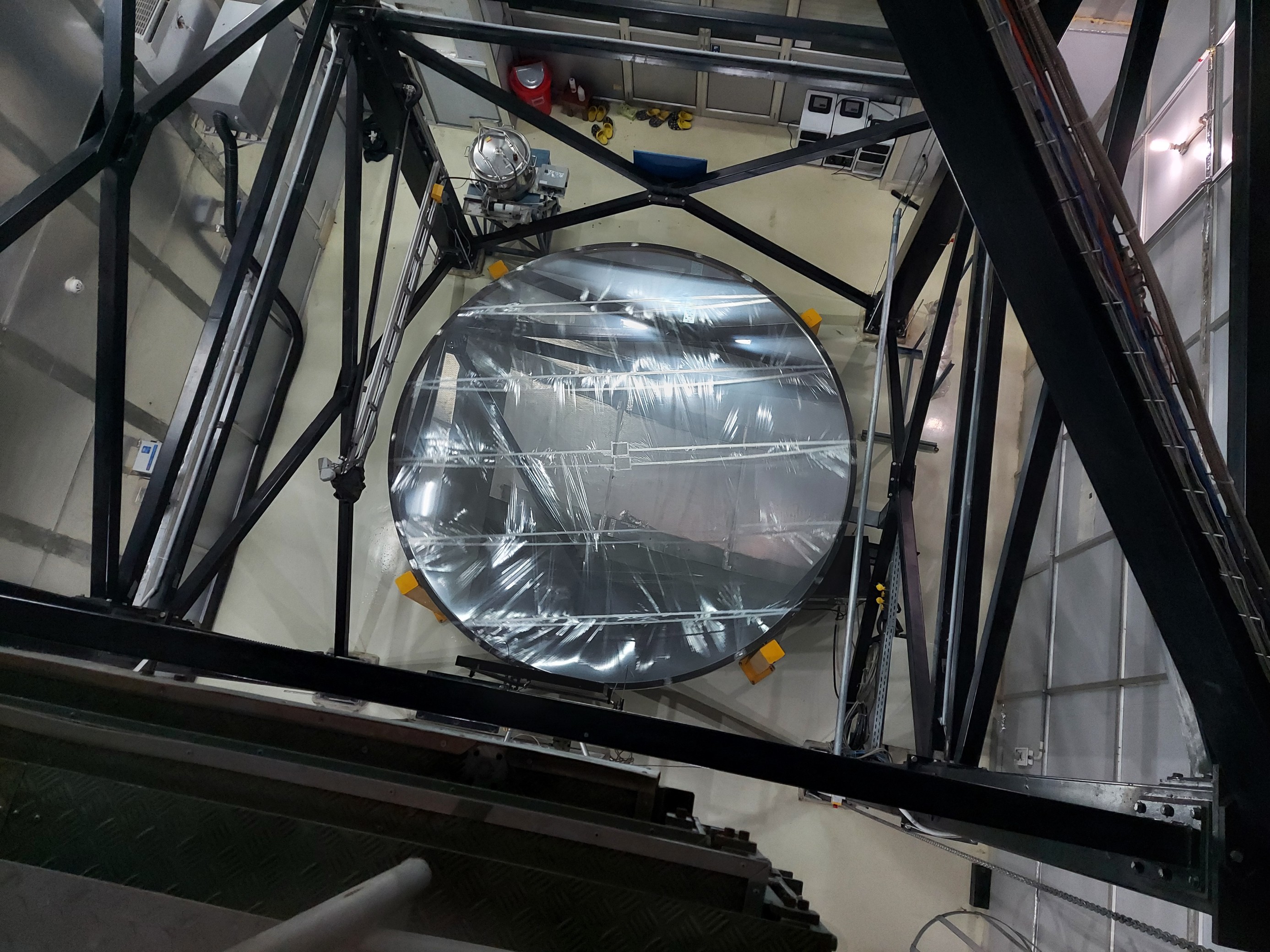
आईएलएमटी ने मई 2022 के दूसरे सप्ताह में पहला प्रकाश प्राप्त किया। जी, आर और आई स्लोन फिल्टर के माध्यम से पहली प्रकाश टिप्पणियों का उपयोग करते हुए, आकाश के एक छोटे से हिस्से की एक रंग मिश्रित छवि (नीचे दिखाया गया) तैयार की गई। आकाशगंगाओं और अन्य तारकीय वस्तुओं की विशेषताओं को उजागर करने के लिए, छवि में हरे रंग को थोड़ा बढ़ा दिया गया है। एनजीसी 4274 गैलेक्सी को ऊपरी दाएं कोने में देखा जा सकता है।
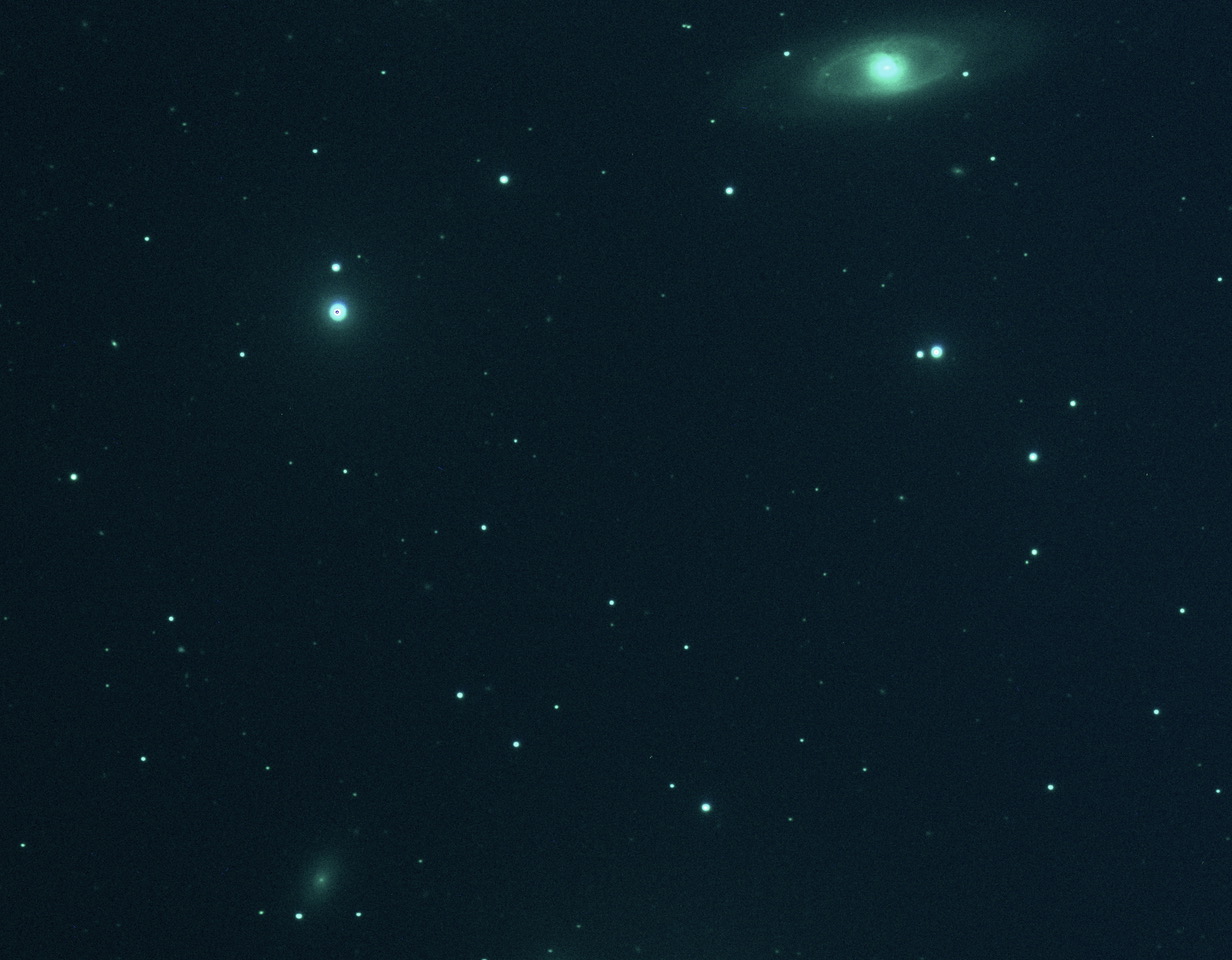
आईएलएमटी का उद्घाटन 21 मार्च 2023 को माननीय विज्ञान और राज्य मंत्री द्वारा किया गया था; प्रौद्योगिकी और पृथ्वी विज्ञान, भारत सरकार, डॉ. जितेंद्र सिंह, देवस्थल में उत्तराखंड के माननीय राज्यपाल, लेफ्टिनेंट जनरल (सेवानिवृत्त) गुरमीत सिंह की गरिमामयी उपस्थिति में। इस महत्वपूर्ण अवसर पर कई बेल्जियम और भारतीय गणमान्य व्यक्ति भी उपस्थित थे। उद्घाटन समारोह की झलकियाँ:
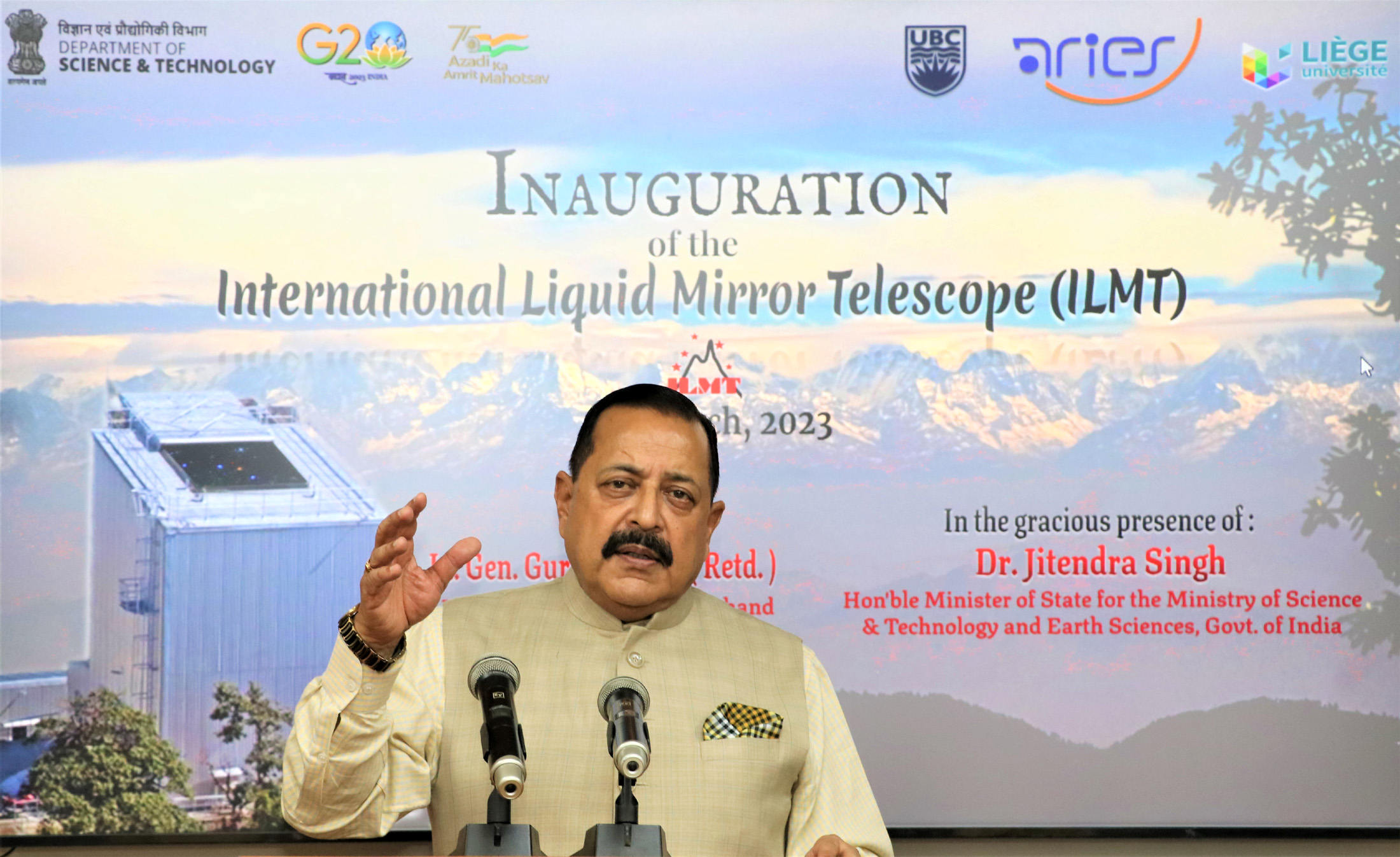

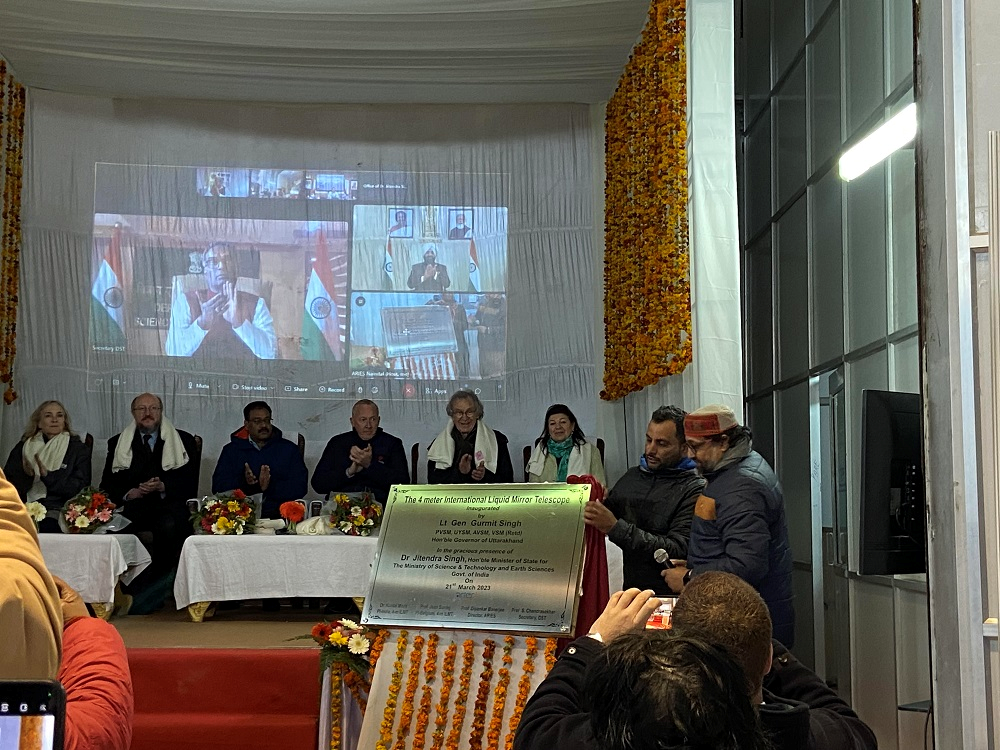
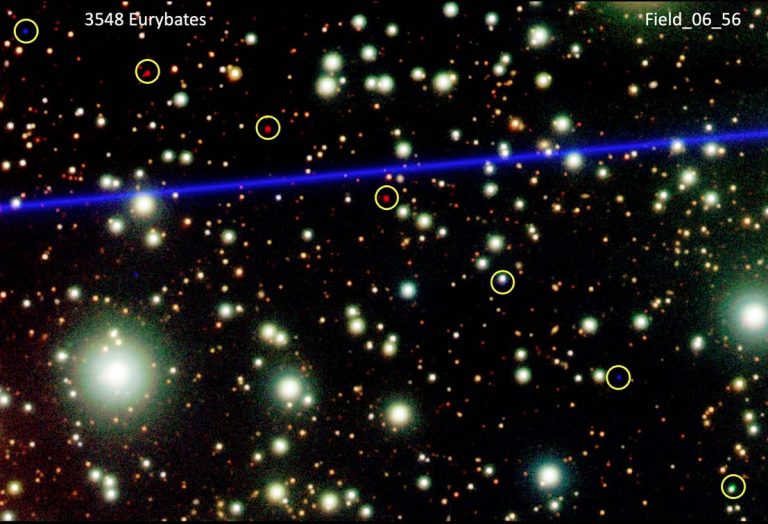
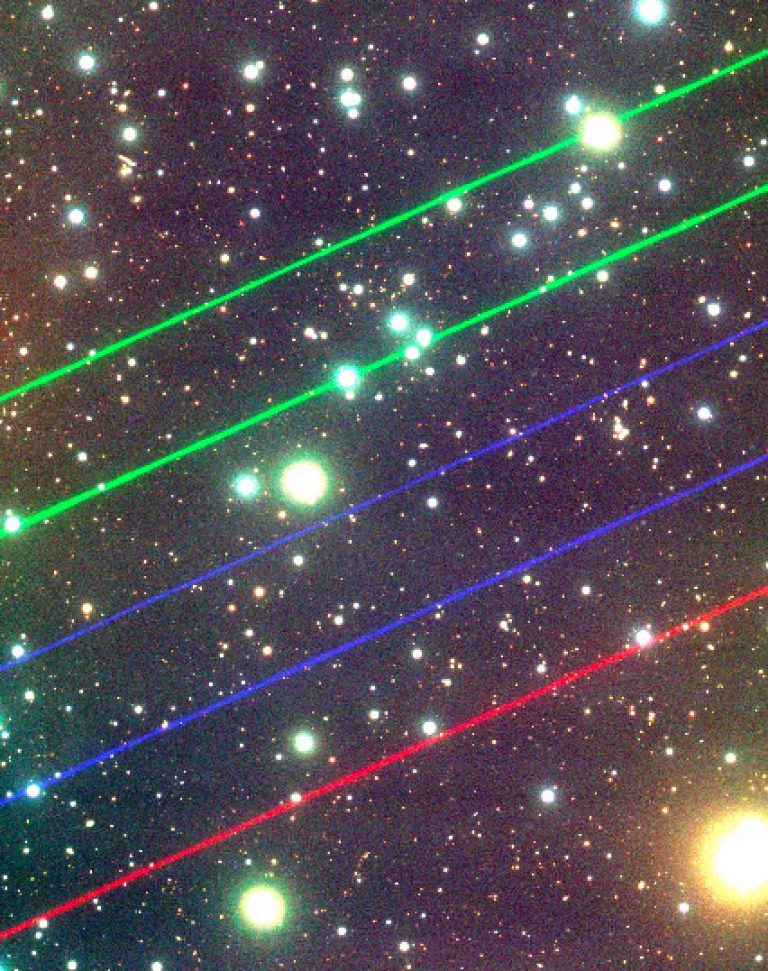
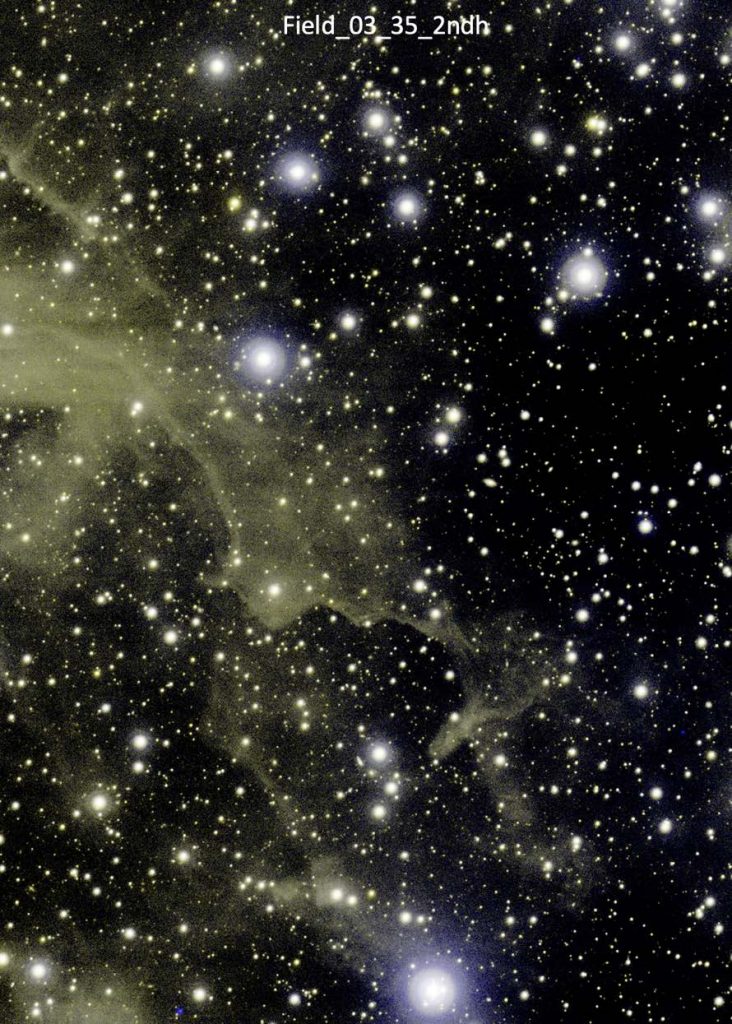
एक तरल दर्पण टेलीस्कोप के जेनिथ अवलोकन मोड को देखते हुए और उत्तरी गैलेक्टिक ध्रुव तक पहुंचने के लिए, देवस्थल वेधशाला आदर्श रूप से स्थित है अक्षांश में (+29° 22' 26” के करीब)। इस साइट से, एक गहरा (i' = 22 मैग) सर्वेक्षण उच्च गांगेय अक्षांश पर लगभग 50 वर्ग डिग्री को कवर करेगा, जो बहुत है गुरुत्वाकर्षण लेंसिंग अध्ययनों के साथ-साथ दिलचस्प एक्सट्रागैलेक्टिक वस्तुओं के विभिन्न वर्गों की पहचान के लिए उपयोगी (सीएफ़. नए क्वासर, सुपरनोवा, क्लस्टर, वगैरह।)।
पहला प्रकाश प्राप्त करने के बाद, आईएलएमटी ~ + 29° 22 के अक्षांश पर आकाश की एक संकीर्ण 27 चाप मिनट की पट्टी के भीतर निरंतर चरम निगरानी के लिए उपयोग किया जा रहा है '26' कम से कम अगले पांच साल (या अधिक) की अवधि के लिए। उपकरण/डिटेक्टर की प्रमुख विशेषताएं नीचे दी गई हैं:
| डिटेक्टर: | 4k x 4k सीसीडी कैमरा |
| निर्माता: | स्पेक्ट्रल उपकरण |
| परिचालन तरंग दैर्ध्य: | 4000 से 11000 Å स्पेक्ट्रल रेंज |
| फ़िल्टर: | एसडीएसएस फिल्टर g', r' , i' |
| एकीकरण मोड | समय विलंबित एकीकरण (TDI) मोड, यानी यह तारों को इलेक्ट्रॉनिक रूप से संबंधित शुल्कों को उसी दर पर ट्रैक करता है जिस दर पर लक्ष्य संसूचक के पार जाता है (एकीकरण समय लगभग 102 सेकंड)। |
- कच्चे डेटा और एस्ट्रोमेट्रिक कैलिब्रेटेड डेटा का उपयोग करके डाउनलोड किया जा सकता है इस लिंक में.
- लेखकों से अनुरोध है कि शोध प्रकाशनों के शीर्षक या सारांश में 4m आईएलएमटी का उल्लेख करें।
- टेलीस्कोप का वर्णन करते समय निम्नलिखित पेपर का हवाला दिया जाना चाहिए।
-
अभिस्वीकृति: 4m इंटरनेशनल लिक्विड मिरर टेलीस्कोप (आईएलएमटी) परियोजना का परिणाम आर्यभट्ट रिसर्च इंस्टीट्यूट ऑफ ऑब्जर्वेशनल साइंसेज (एरीज़), भारत, इंस्टीट्यूट ऑफ एस्ट्रोफिजिक्स एंड जियोफिजिक्स (यूनिवर्सिटी ऑफ लीज, बेल्जियम), ब्रिटिश कोलंबिया, लवल के विश्वविद्यालयों के बीच सहयोग से है। , मॉन्ट्रियल, टोरंटो, विक्टोरिया और यॉर्क विश्वविद्यालय। यह भारत सरकार के विज्ञान और प्रौद्योगिकी विभाग के तहत एक स्वायत्त संस्थान एरीज़ द्वारा संचालित और प्रबंधित एक चरम आकाश सर्वेक्षण टेलीस्कोप है।
पहले कमीशनिंग चरण (अक्टूबर-नवंबर 2022) के दौरान प्राप्त आंकड़ों में शामिल आईएलएमटी टीम भव्य ऐलावाडी (1,2), तलत अखुनोव (3,4), एरमानो बोरा (5), मोनालिसा दुबे (1,6) से बनी है। ), नवीन दुकिया (1,6), जिउयांग फू (7), बलदीप ग्रेवाल (7), पॉल हिकसन (7), ब्रजेश कुमार (1), कुंतल मिश्रा (1), विभोर नेगी (1,2), कुमार प्रांशु (1,8), एथेन सन (7), जीन सुरदेज (9)।
- आर्यभट्ट रिसर्च इंस्टीट्यूट ऑफ ऑब्जर्वेशनल साइन्स नैनीताल, भारत
- दीन दयाल उपाध्याय गोरखपुर विश्वविद्यालय, गोरखपुर, भारत
- उज़्बेकिस्तान का राष्ट्रीय विश्वविद्यालय, ताशकंद, उज़्बेकिस्तान
- उलूग बेग खगोलीय संस्थान, ताशकंद, उज्बेकिस्तान
- लवल यूनिवर्सिटी, क्यूबेक, कनाडा
- महात्मा ज्योतिबा फुले रोहिलखंड विश्वविद्यालय, बरेली, भारत
- ब्रिटिश कोलंबिया विश्वविद्यालय, वैंकूवर, कनाडा
- कलकत्ता विश्वविद्यालय, कोलकाता, भारत
- लीज विश्वविद्यालय, बेल्जियम
टेलीस्कोप के संचालन में सहायता के लिए आईएलएमटी टीम हितेश कुमार, हिमांशु रावत और खुशाल सिंह की आभारी है.
-
डेटा की अगली रिलीज़ दिसंबर 2023 में होगी.
4m इंटरनेशनल लिक्विड मिरर टेलीस्कोप (आईएलएमटी) प्रोजेक्ट आर्यभट्ट रिसर्च इंस्टीट्यूट ऑफ ऑब्जर्वेशनल साइंसेज (एरीज़, India), संस्थान के बीच एक सहयोग से परिणाम है। खगोल भौतिकी और भूभौतिकी (लीज विश्वविद्यालय), कनाडाई खगोलीय संस्थान, मॉन्ट्रियल विश्वविद्यालय, टोरंटो विश्वविद्यालय, यॉर्क विश्वविद्यालय, ब्रिटिश कोलंबिया विश्वविद्यालय और विक्टोरिया विश्वविद्यालय।
अधिक विवरण के लिए कृपया देखें: http://www.ilmt.ulg.ac.be/home/आईएलएमटी का अवलोकन देने वाला एक डिजिटल ब्रोशर यहां उपलब्ध है.आईएलएमटी पर एक लघु फिल्म नीचे दी गई है।

